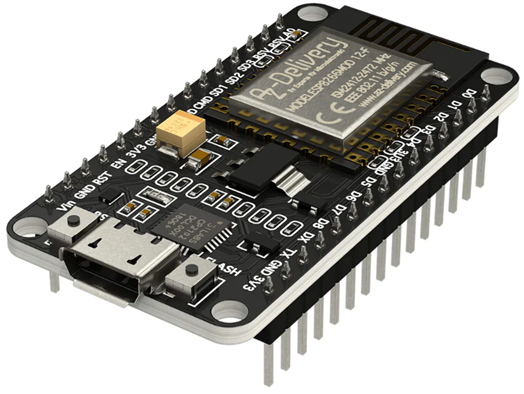The Internet of Things (IoT) recently has gained acceptance in academic and industrial fields. In 2014 the Espressif Systems released the ESP8266 IoT board and later in 2016 they released the advanced version which they named as ESP32. Till this day both these ESP boards are leading IoT based microcontrollers boards. Sometimes a lot of people find it confusing to choose between them. So here in this lesson we will discuss a brief comparison between them.
ESP32
ESP32 is a high clocked speed power full microcontroller board which is the successor of ESP8266. It has a dual core CPU with clock frequency of 160MHz to 240MHz and an inbuilt integrated WiFi and Bluetooth module.
It features an ultra-low power co processor which in deep sleep mode can work up to years on a single battery. It has integrated power amplifiers, low noise amplifiers, advanced security system and a 2.5GHz dual mode WiFi and Bluetooth module. All these features inside a tiny, printed board which is not only cheaper than an Arduino Uno but half the size of it.
Here are some main features of ESP32:
-
- ESP32 has dual core high speed clock processor
- Built-in WiFi and Bluetooth support for wireless based projects
- More number of GPIO pins available
- ESP32 provides us with astonishing speed of up to 150Mbps
ESP8266
The ESP8266 designed by Espressif Systems is an integrated WiFi SoC solution that meets user demand for efficient power usage and a compact design board for IoT industry applications. It integrates all components required to make a fully functional IoT based WiFi device.
The single core L106 Xtensa processor includes 32KB of instruction memory space, 16 GPIO pins and multiple communication protocols like UART, SPI, I2C and an Analog to Digital (ADC) converter.
Some main highlights of ESP8266 includes:
-
- ESP8266 has powerful 32-bit L106 Xtensa onboard processing chip
- It has self-calibrated radio frequency
- It has high level on chip integration which remove the need of external circuitry
- It has 17 GPIO pins.
- 32 kB of instruction RAM
- It contains 10-bit ADC
- Multiple communication protocols like UART, SPI, I2C and I2S
Comparison Between ESP32 vs ESP8266
Here is a brief comparison between ESP32 and ESP8266. Some of the features between them are the same as WiFi support but ESP8266 lacks behind in Bluetooth module and security.
| Comparison | ESP32 | ESP8266 |
| Processor | Tensilica Xtensa LX6 microprocessor | Xtensa 32-bit L106 |
| Processor Core | Dual cores | Single core |
| Operating Voltages | 2.5 V to 3.6 V | 2.5 V to 3.6 V |
| Bluetooth | Dual Bluetooth Classic + BLE | No |
| WiFi Support | Yes | Yes |
| Hardware Security | More advance security | No |
| Hall Sensor | Yes | No |
| Temperature Sensor | Yes | No |
| Capacitive Touch Sensor | 10 | No |
| Power Consumption | 10uA deep sensor | 20uA |
| Co-Processor | ULP | No |
| GPIO | 39 | 17 |
| SPI | 4 | 2 |
| ROM | 448 kB | No |
| CAN | 2 | No |
| UART | Yes | Yes |
Which Is Better: ESP32 or ESP8266
Seeing all the above comparisons, ESP32 is by far better than ESP8266. As it leads in most of the features with a greater number of CPU cores, faster WiFi and Bluetooth support. And not only that it comes with double the number of GPIO pins compared to ESP8266.
It also has some go to features like capacitive touch GPIO pins, hall effect sensor and temperature sensor, so ESP32 is the way to go.
Conclusion
Both these boards ESP32 and ESP8266 are good at their place. The ESP8266 processor is more optimized for low current applications while the ESP32 has more GPIO pins with features like hall effect and temperature sensor. To choose one of them it all depends upon the requirements of the board. We recommend ESP32 because it is a more advanced version with more security. This article will further assist you on deciding between them.


